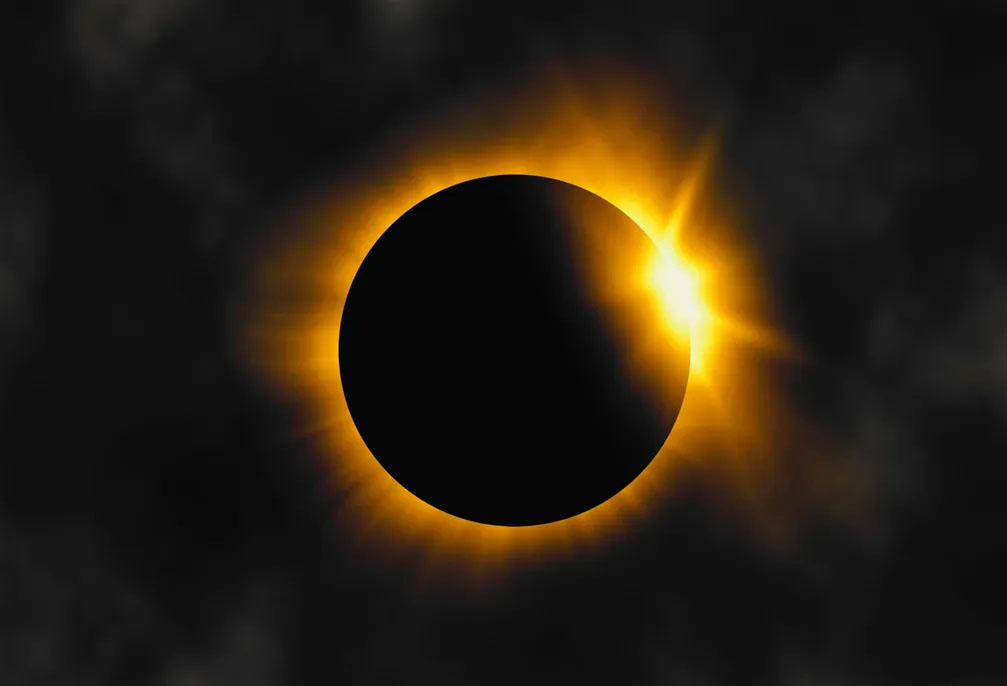
Photo Credit: BBC
As the world paused to witness the celestial spectacle of the solar eclipse, millions
gazed upward drawn by the allure of a rare cosmic dance. Yet, beyond the mesmerizing
sight lies a deeper tale of ancient myths, scientific marvels and the quest to unravel the
mysteries of the universe.
The solar eclipse occurs when the moon passes directly between the sun and the earth
completely blocking the sun’s light on one side and casting a shadow on a small area of
earth on its other side. This only happens occasionally because the moon does not
orbit in the same plane as the sun and earth do. During the solar eclipse there are
periods of darkness that last a mere few seconds or in some cities it could surpass four
minutes.
There are 4 types of solar eclipses. The first one is the Total solar eclipse which
happens when the moon passes between the sun and earth, completely blocking the
face of the sun. A total solar eclipse is the only eclipse where viewers can momentarily
remove their eclipse glasses for a brief period when the moon is completely blocking the
sun. The last solar eclipse was witnessed on April 8, 2024. A total solar eclipse occurs
on average every 18 months (about 1 and a half years).
Another type of eclipse is the annual solar eclipse which happens when the moon
passes between the sun and the earth but when it is at or near its farthest point from
earth, it appears smaller than the sun and does not completely cover the sun. The
moon appears as a dark disk creating what looks like a ring around the moon. An
annual solar eclipse occurs once every 2 years.
We also have the partial eclipse which happens when the moon passes between the
sun and earth, but the sun, moon and earth are not perfectly lined up only part of the
sun appear to be covered giving it a crescent shape. The partial eclipse occurs twice
every year.
Lastly, we have the hybrid solar eclipse. Because the earth’s surface is curved,
sometimes an eclipse can shift between annular and total as the moon’s shadow moves
across the globe.
The solar eclipse is also dubbed as the Great North American eclipse. The last solar
eclipse occurred on August 21, 2017, with 88 percent of US adults viewing it either
directly or electronically and the most recent one was on April 8, 2024.
By Christine Amanda






















